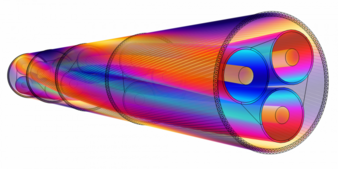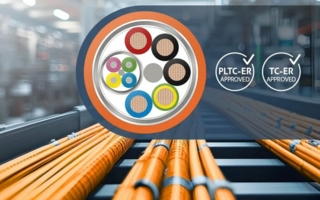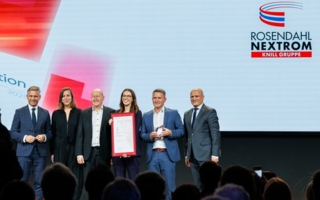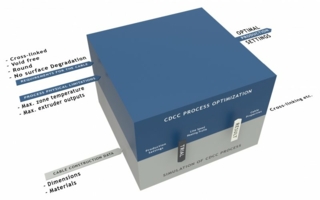24/06/2024 – Cable manufacturing / simulation
Cable analysis using 3D modeling and simulation technology
NKT in Sweden uses numerical modeling to investigate electromagnetic fields and calculate armor losses in 3D cable designs. The modeling results were validated with experimental measurements in order to be able to carry out design analyses with the aid of simulations.
The cable industry is a major billion-dollar business in which installation, maintenance and development play a central role. In particular, the installation of submarine cables such as the Norned cable, which connects Norway and the Netherlands, can incur high costs. Repairing or replacing such cables is also a costly endeavor. In the face of these challenges, the company relies on innovative technologies to increase efficiency and cost-effectiveness in the cable industry. They utilize Comsol “Multiphysics” simulation software to manage the complex requirements of cable analysis.
Overcoming limitations when modeling cables
One problem with testing cable designs is that many existing standards are outdated to a certain extent. Some IEEE and IEC standards for cables are based on analytical approaches that were derived and simplified about 80 to 100 years ago to allow for manual calculations. In the last ten years, however, it has been proven that the formulas overestimate the losses of the reinforcement.
With the more recent methods, it is possible to accurately measure the losses of the reinforcement, but this requires tests to be carried out directly on the cable. Almost all high-voltage offshore cables are customized and are therefore not available for testing before production begins. With numerical analysis, testing became easier, but still left a lot to be desired. The first 3D cable models were created less than a decade ago. Until recently, it took days to weeks before they could be calculated on a supercomputer. Advances in hardware and today's modeling techniques have now made development and analysis faster, easier and more robust.
Modeling of a reinforced cable in 3D
The NKT research group used the Comsol “Multiphysics” simulation software and the AC/DC Module add-on for their cable analysis. This software enables 3D modeling of an armored cable to analyze the magnetic fields and calculate the losses of the reinforcement. The reduced size of the model saves computing time and memory requirements while ensuring that all relevant physical aspects are captured. Another memory-saving approach is the use of infinite elements, which allow designers to include a sufficient amount of air around the cable in the modeling domain while limiting the required mesh and memory space.
The modeling consisted of three main steps: Firstly, a current-controlled model with predefined temperatures was created. The current is not affected by the cable impedance or temperature fluctuations, instead it is controlled by the system load. Next, the team calculated the eddy current losses as losses caused by local currents in the armor wires at the predefined temperature. Thirdly, they calculated the magnetic hysteresis losses by integrating a function of the magnetic B-fields over the armor wire volume.
Validation of cable modeling results
Modeling is only useful if the results accurately reflect the physics of the component in reality. To ensure this, the group validated the modeled results with the existing cable data. They found that the modeled results were within 3 percent of the experimentally measured cable losses. These results are more accurate than the IEC standard for the modeled cable type, where the total loss deviates 10% to 30% from the measurements.
The results proved that simulation is a reliable and trustworthy method for analyzing cable designs. This finding has had far-reaching implications for the company. Because the simulations are so accurate, they can now analyze the cables without having to compare them with measurements every time. Based on the analyses of the simulation software, NKT was able to find out the extent of losses in a cable are before it is manufactured.
The author Brianne Christopher is Senior Content Manager at Comsol.
Comsol Multiphysics GmbH
Robert-Gernhardt-Platz 1
37073 Göttingen/Germany
Tel.: +49 551 99721-0
info@comsol.de





